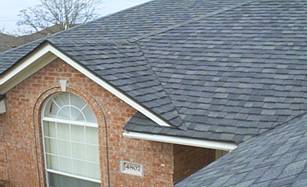Water leaking is very annoying because of its ultimate damaging effect. Left unattended, this can lead to serious destruction of the structural integrity of the house as well as threaten the safety and health of building residents. Such an event must be promptly addressed by inspecting for signs or evidence of water penetration such as interior wall stains, mold and other visual indications that point to the presence of moisture. When signs of water leakage are observed, it is essential to locate the source of entry to avoid unnecessary repairs and impending household problems.
serious destruction of the structural integrity of the house as well as threaten the safety and health of building residents. Such an event must be promptly addressed by inspecting for signs or evidence of water penetration such as interior wall stains, mold and other visual indications that point to the presence of moisture. When signs of water leakage are observed, it is essential to locate the source of entry to avoid unnecessary repairs and impending household problems.
Visual Evidence
In order to avoid facing any imminent hazards that water entry causes to a building, it is critical to look for common warning signs that may be present when a roofing system develops leaks. The only way to ensure that the top of a building is in good working condition is to have it inspected regularly by an expert trained to look for such signs.
- Stains or Spots – Coffee stains located on a ceiling is a sure sign that there is leakage or heavy water condensation in the attic. Concentric rings of a brownish color are usually visible on ceilings and corners of exterior walls. Each ring is progressively lighter moving outward and indicates damage or structural weakness.
- Mold – Another problem that arises when water penetrates a building is mold. It develops when there is high relative humidity and is frequently associated with a cooling and heating system. Mold is indicated by cracked paint, bulges, and wall discoloration. The most common areas for growth are overhead ceilings, wall cavities, and crawl spaces. A musty odor is often the first sign of this potential problem; if it is discovered, it should be removed immediately because of the accompanying health risk.
- Damaged Flashing – If this is noticeable, it should be closely inspected as any evident damage or inadequate sealing can provide good access for water.
- Soft Spots – This particular problem is demonstrated by sagging ceiling panels. Dampness due to leaking water may cause the soft spots to project downward.
- Missing or Broken Shingles – Aside from an unpleasant and ugly appearance, this could allow moisture to stagnate and puddle. If this happens, the collecting water can seep through and become a potential problem.
Damage Effects
Water when it leaks can cause structural problems if allowed to go undetected, including foundation deterioration; wooden supports can rot and lead to premature failure or total collapse. All of this affects not just the roofing system but building residents as well. To avoid such difficulties, there should be an inspection by roofing experts. Their knowledge regarding maintenance and the latest technological advances can surely address any existing issues.
The ideal way to avoid roof leakage is to inspect and look for any signs of water entry before it becomes worse; this can best be accomplished during the spring or summer months. Inspect for and debris or blockage in gutters or downspouts as well as any disruption of the integrity of the chimney, vents and skylight joints. The best way to accomplish such a complex inspection is through using the services of a great roofing company contractor. However it is accomplished, a roof should be routinely inspected for any potential damage so that interior water leakage can be prevented!
The best way to approach this goal is through the services of a roofer Houston contractor. Schulte Roofing of Navasota provides professional service to all Houston communities and is the best choice to handle all roofing needs!
